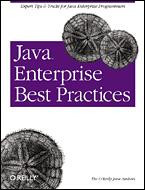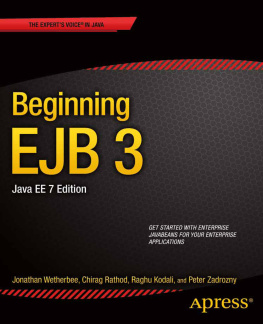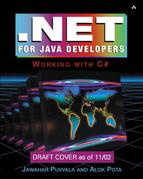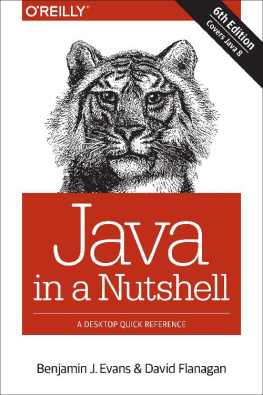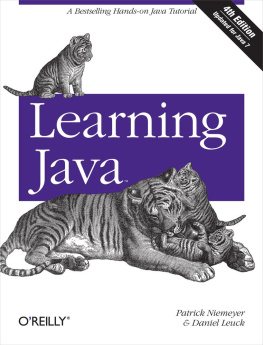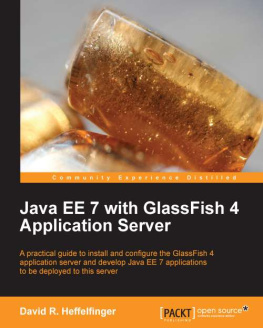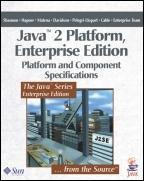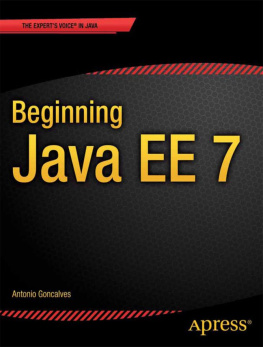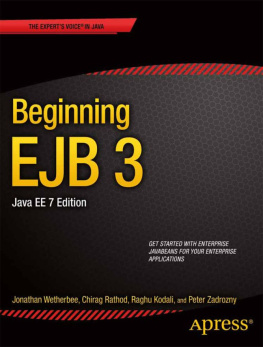Colophon
Our look is the result of reader comments, our ownexperimentation, and feedback from distribution channels. Distinctivecovers complement our distinctive approach to technical topics,breathing personality and life into potentially dry subjects.
The animal on the cover of Java Enterprise Best Practices is thecommon sand dollar (Echinarachnius parma). This species of sand dollarcan be found on the shores of the North American East coast north ofNew Jersey. It is circumpolar and can also be found in Alaska, BritishColumbia, Siberia, and Japan.
A sand dollar can be anywhere from 5-10 centimeters when fullygrown and can weigh 10-25 grams. The hard shell (called a "test" sinceit is not really a shell because it is sheathed in skin) containsseveral small perforations that form a five-part, petal-likeconfiguration. The animal is covered in brown spines, which gives it afurry appearance. Spines on its flat underside help it move throughthe sand. Hair-like strands called cilia cover the spines. Coated inmucous, cilia capture and move food to the sand dollar's mouth, whichlies in the middle of the star-shaped grooves on the animal'sunderside. Sand dollars feed on algae and small pieces of organicmaterial found on the ocean floor.
Because of their hard shells and minuscule bodies, sand dollarsare relatively safe from predators. Also, they further protectthemselves by burrowing into the sand on the sea floor. After a storm,their skeletons will often wash up on beaches.
Matt Hutchinson was the production editor and proofreader for Java Enterprise Best Practices . Audrey Doyle was the copyeditor. EmilyQuill and Tatiana Apandi Diaz provided quality control. Judy Hoerprovided production assistance. Lynda D'Arcangelo wrote theindex.
Hanna Dyer designed the cover of this book, based on a seriesdesign by Edie Freedman. The cover image is a 19th-century engravingfrom the Dover Pictorial Archive. Emma Colby produced the cover layoutwith QuarkXPress 4.1 using Adobe's ITC Garamond font.
David Futato designed the interior layout. This book wasconverted to FrameMaker 5.5.6 with a format conversion tool created byErik Ray, Jason McIntosh, Neil Walls, and Mike Sierra that uses Perland XML technologies. The text font is Linotype Birka; the headingfont is Adobe Myriad Condensed; and the code font is LucasFont'sTheSans Mono Condensed. The illustrations that appear in the book wereproduced by Robert Romano and Jessamyn Read using Macromedia FreeHand9 and Adobe Photoshop 6. The tip and warning icons were drawn byChristopher Bing. This colophon was written by Matt Hutchinson.
The online edition of this book was created by the Safariproduction group (John Chodacki, Becki Maisch, and Madeleine Newell)using a set of Frame-to-XML conversion and cleanup tools written andmaintained by Erik Ray, Benn Salter, John Chodacki, and JeffLiggett.
[]
actions
application logic
architecture
attributes
|
[]
caching
calls
classes
classpath
|
[]
design
[See RMI]
[See also MBeans]
[See also MBeans]
|
[]
EJBs (Enterprise JavaBeans)
[See JavaMail email]
elements
[See also JavaMail]
[See EJBs]
exceptions
|
[]
[See internationalization]
implementations
interfaces
[See also localization]
[See JavaMail email]
intrfaces
|
[]
[See JMX]
[See also email]
[See JSP]
JDBC
JMX (Java Management Extensions)
[See also MBeans; dynamic MBeans]
|
[]
[See also internationalization]
|
[]
[See JMX]
marshalling code
[See also dynamic MBeans]
methods
|
[]
[See RMI]
RMI (Remote Method Invocation)
|
1.1 How Does a Best Practice Come About?
Slowly, and with experience. But let's take a stepback first and look at how anyone becomes an expert in a specificenvironment. A programmer goes through four steps when learning toprogram with any modern language, including Java:
[1] GuySteele uses a humorous analogy of real-world languages at thebeginning of Effective Java (Addison-Wesley) todemonstrate this, although he boils it down to three points. I tendto stress environment to my authors much more heavily, as that oftendecides whether a practice is good or bad (e.g., massive lookuptables don't work well on cell phones). These fourpoints also fall more in line with the types of books were generateat O'Reilly.
Next page
